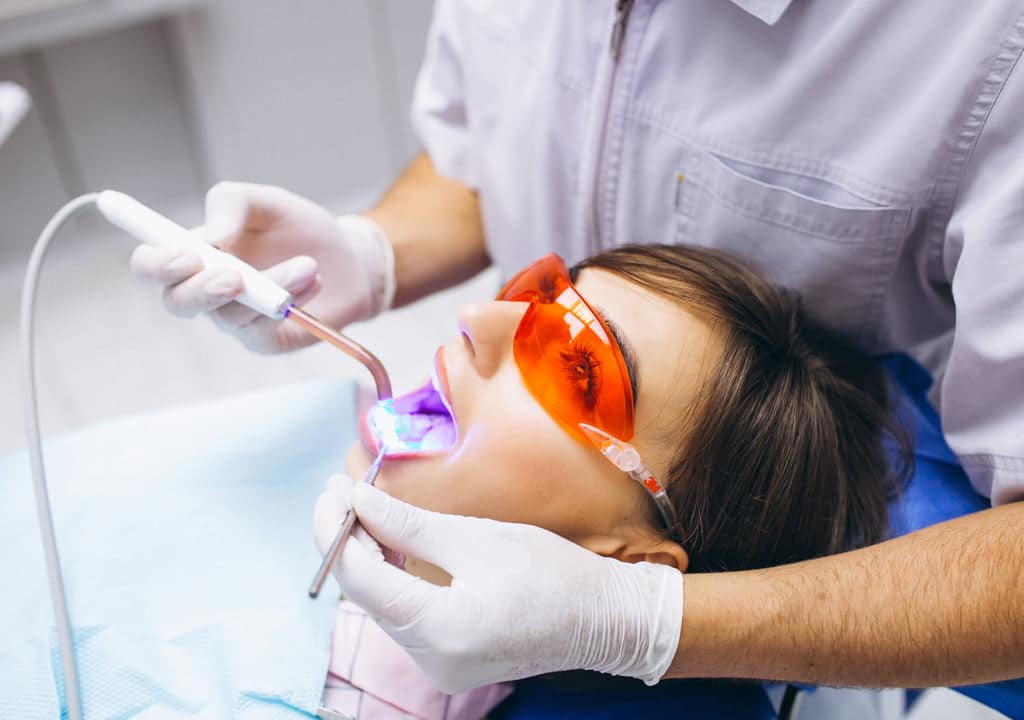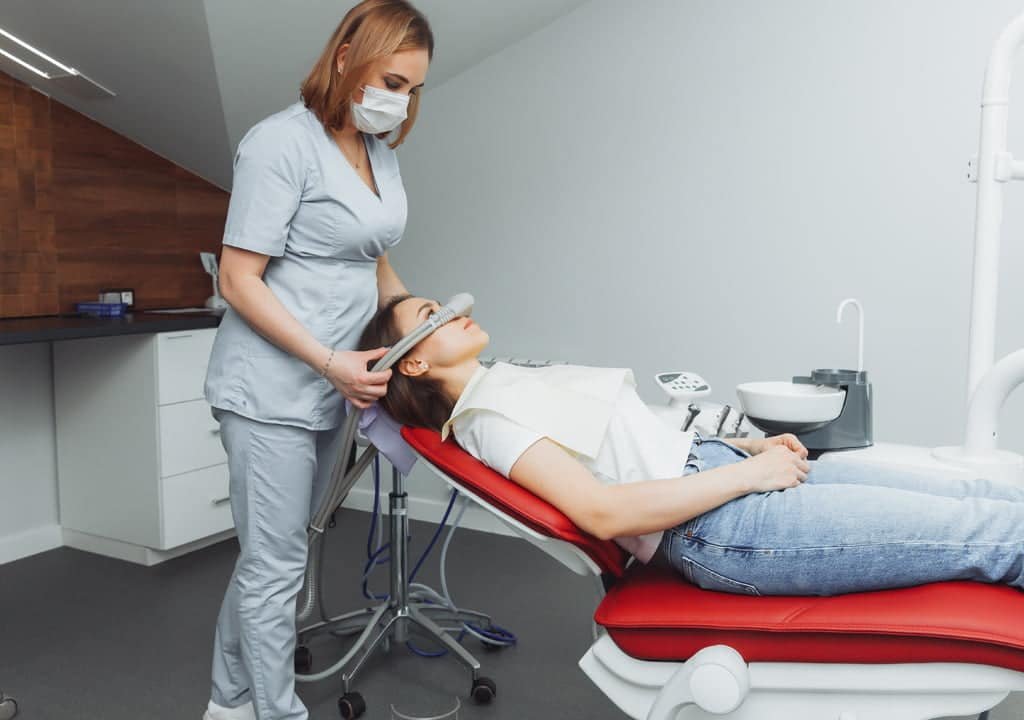Blog
Treating Gum (Periodontal) Disease
Introduction:
We have compiled this article on “Treating Gum (Periodontal) Disease“. The reference links are at the bottom of the article.
[1]What Is Periodontitis?
Periodontitis, or gum disease, is a common infection that damages the soft tissue and bone supporting the teeth. Without treatment, the alveolar bone around the teeth will gradually erode.
Periodontitis means inflammation in the supporting structures around the tooth. Bacteria and other microorganisms stick to the surface of the tooth and in the pockets surrounding the tooth. As they multiply, the immune system reacts, leading to inflammation.
Untreated periodontitis will eventually result in tooth loss and may increase the risk of stroke, heart attack, and other health problems.
Periodontitis is a chronic or long-term inflammatory disease. Good oral hygiene practices can help manage or prevent it.
In this article, find out why periodontitis happens, who is at risk, and how to treat and prevent it.
Symptoms
The signs and symptoms of periodontitis include:
- Inflamed Or Swollen Gums
- Discolored Plaque Or Tartar On The Teeth
- Bleeding While Brushing Or Flossing
- Halitosis, Or Bad Breath
- Pain When Eating Or Chewing
- Sensitive Teeth
- Receding Gums, Which Make The Teeth Look Longer
- Extra Spaces Between The Teeth
- Pus Between The Teeth And Gums
- A Metallic Taste In The Mouth
- Loose Or Lost Teeth
- Source In The Way The Teeth Feel When Biting
- Changes In The Fit Of Partial Dentures
- Treatment
- Treatment Aims To Clean Out Bacteria From The Pockets Around The Teeth And Prevent Further Destruction Of Bone And Tissue.
Scaling And Cleaning
Removing plaque and calculus can help restore periodontal health.
This involves:
- Scaling and debridement to clean the surfaces of the teeth above the gum line and in the pockets
- Polishing to smooth rough areas on the teeth, which helps prevent the buildup of plaque
- Treating the teeth with fluoride
How often a person needs treatment will depend on how much plaque and tartar accumulate.
[2]Treatments For Gum Disease
There are a variety of treatments for gum disease depending on the stage of the disease, how you may have responded to earlier treatments, and your overall health.
Treatments range from nonsurgical therapies that control bacterial growth to surgery to restore supportive tissues.
Non-Surgical Treatments For Gum Disease
Professional Dental Cleaning
During a typical checkup, your dentist or dental hygienist will remove the plaque and tartar (plaque that builds up and hardens on the tooth surface and can only be removed with professional cleaning) from above and below the gum line of all teeth. If you have some signs of gum disease, your dentist may recommend professional dental cleaning more than twice a year. Dental cleanings are not a treatment for active gum disease. They are, though, an important preventive measure that can help you stave off its development.
Scaling And Root Planing
This is a deep-cleaning, nonsurgical procedure, done under a local anesthetic, whereby plaque and tartar from above and below the gum line are scraped away (scaling) and rough spots on the tooth root are made smooth (planing). Smoothing the rough spots removes bacteria and provides a clean surface for the gums to reattach to the teeth. Scaling and root planing is done if your dentist or periodontist determines that you have plaque and calculus (hardened plaque, also called tartar) under the gums that need to be removed.
Surgical Treatments For Gum Disease
Some treatments for gum disease are surgical. Some examples are:
Flap Surgery/Pocket Reduction Surgery
During this procedure, the gums are lifted back and the tartar is removed. In some cases, irregular surfaces of the damaged bone are smoothed to limit areas where disease-causing bacteria can hide. The gums are then placed so that the tissue fits snugly around the tooth. This method reduces the size of the space between the gum and tooth, thereby decreasing the areas where harmful bacteria can grow and decreasing the chance of serious health problems associated with periodontal disease.
Bone Grafts
This procedure involves using fragments of your own bone, synthetic bone, or donated bone to replace bone destroyed by gum disease. The grafts serve as a platform for the regrowth of bone, which restores stability to teeth. New technology, called tissue engineering, encourages your own body to regenerate bone and tissue at an accelerated rate.
Soft Tissue Grafts
This procedure reinforces thin gums or fills in places where gums have receded. Grafted tissue, most often taken from the roof of the mouth, is stitched in place, adding tissue to the affected area.
Guided Tissue Regeneration
Performed when the bone supporting your teeth has been destroyed, this procedure stimulates bone and gum tissue growth. Done in combination with flap surgery, a small piece of mesh-like fabric is inserted between the bone and gum tissue. This keeps the gum tissue from growing into the area where the bone should be, allowing the bone and connective tissue to regrow to better support the teeth.
Bone Surgery
Smoothes shallow craters in the bone due to moderate and advanced bone loss. Following flap surgery, the bone around the tooth is reshaped to decrease the craters. This makes it harder for bacteria to collect and grow.
In some patients, the nonsurgical procedure of scaling and root planing is all that is needed to treat gum diseases. Surgery is needed when the tissue around the teeth is unhealthy and cannot be repaired with nonsurgical options.
Conclusion:
Thank you for reading this article, and check back frequently for other dental health articles. Should you have any questions, please contact Apple Tree Dental today!
Article compiled by Apple Tree Dental
Article reference links













